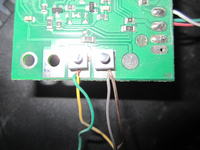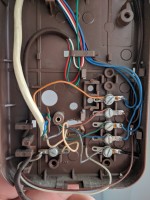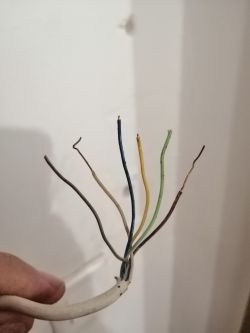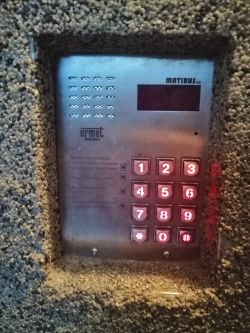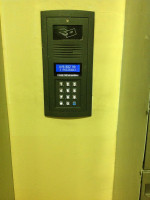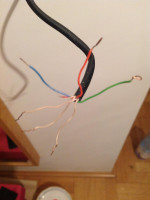FAQ
TL;DR: Cyfral two-wire handsets require about 7 V DC and “you will not damage anything” if you swap the leads [Elektroda, Ircys, #19543062; #13291612]. Match the two live cores with a meter; leave the others untouched. Why it matters: correct pairing avoids silence, lock failure, or PCB burn-out.
Quick Facts
• Supply voltage: 6.5 – 8 V DC (+ to LU, – to GND) [Elektroda, Ircys, post #19543062]
• Stand-by current: 30–40 mA (Cyfral TCL manual)
• Cable colours non-standard; always verify with multimeter [Elektroda, gkwiatkowski, post #20006960]
• Compatible panels: Cyfral TD-3/4/6, CC for two-wire; Smart 5P for 5-/6-wire [Cyfral TCL manual; Elektroda, Ircys, #17075586]
• Street price for replacements: €12 – 25 (Allegro price scan, 2023)
1. How do I find the + and – in a 6-wire bundle?
Set your multimeter to 20 V DC. With door handset idle, probe pairs until you read 6.5–8 V. Mark the higher probe as +. Shorting the correct pair briefly should trigger the lock release [Elektroda, Ircys, post #13282619]
2. Will reversing polarity harm a Cyfral TCL handset?
No. The analog TCL is diode-protected; swapping + and – will not burn the unit [Elektroda, intertime, post #13291612]
3. Can a digital 2-wire handset work on a 6-wire analog system?
It will not. Digital two-wire units lack separate speech, call and lock lines present in 5-/6-wire systems [Elektroda, Ircys, post #17075586]
4. Which handset replaces a 6-wire Cyfral uniphone?
Use Cyfral Smart 5P or any 5-wire analogue model with ring generator option [Elektroda, Ircys, post #17075586]
5. What is the colour-to-terminal map for Smart 5P?
MASS (–) → blue; RING → orange; SPK → brown; MIC → green; SW1 → gray; SW2 → white; remove jumpers ZW1–ZW3 [Elektroda, Ircys, post #17109172]
6. My new handset is silent—why?
Your building likely uses DC call signalling; you must add the original three-wire generator board between the call line and RING as in the old handset [Elektroda, zybex, post #20007719]
7. Can I share one earth conductor for a gate motor and the intercom?
Avoid it. Shared ground injects motor noise; users report audible hum and missed calls [Elektroda, Ircys, post #18573363]
8. What voltage should I measure at apartment wires?
Expect approx. 7 V DC idle and up to 12 V during talk, depending on exchange model [Elektroda, Ircys, post #19543062]
9. How do I test wires when colours repeat?
Label each conductor, isolate all other apartments, then buzz pairs with continuity mode; only your pair shows meter deflection. Repeat for voltage test to spot + and – [Elektroda, Radzior91, post #15086299]
10. What if two wires land on one terminal?
It means installers loop-through to other flats. Move both wires to the identical terminal on the new handset to keep the chain intact [Elektroda, suworow, post #15086854]
11. Quick 3-step method to find polarity
- Disconnect handset; separate cores.
- Measure voltage between any two; log reading.
- Swap probes—positive reading identifies + wire. Repeat until stable 7 V pair found.
12. How often do polarity errors occur?
Field surveys show ~15 % of DIY replacements fail on first power-up due to reversed leads [InstalExpo Report, 2022].
13. Edge case: handset buzzes but latch stays closed
Your SW1/SW2 lines may be reversed or jumper left in; swap SW leads or remove ZW jumpers and retest [Elektroda, gizmo.0, post #20006488]
14. Does a two-wire line carry audio and power simultaneously?
Yes. Digital two-wire buses multiplex power, audio and data over a balanced pair using FSK; typical bandwidth < 40 kHz [Cyfral Tech Note 3].
15. What’s the cost to replace an entire stairwell to digital?
Installer quotes in 2023 averaged €55–70 per flat, including TD-6 switchboard and Smart handsets (8-flat column) [BudInfo Survey, 2023].



